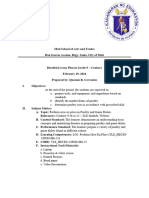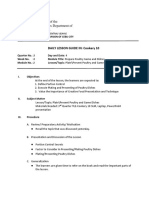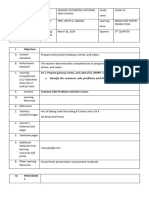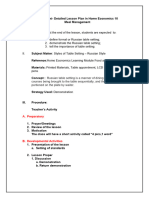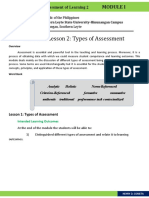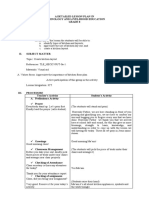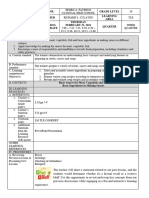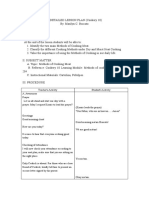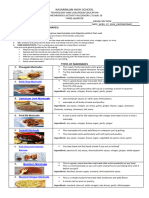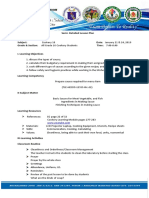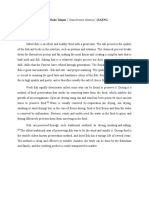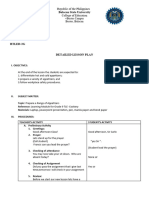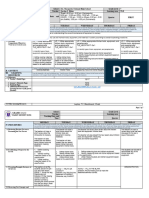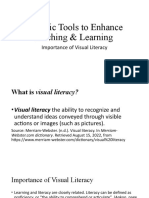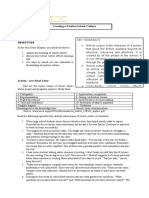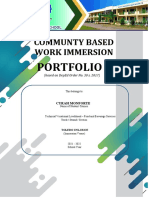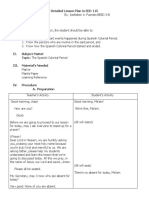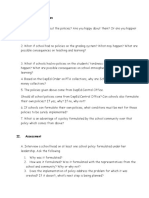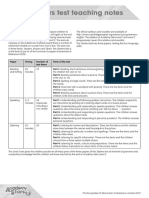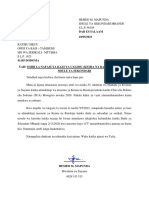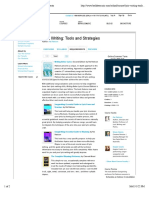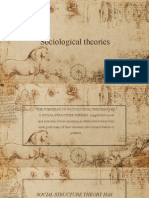Activity 1 - Let's Read These
Here are twelve norms of school culture where people and programs improve. Study
them.
1. Collegiality 7. Appreciation, recognition
2. Experimentation 8. Caring, celebration, humor
3. High Expectations 9. Involvement in decision making
4. Trust and confidence 10. Protection of what is important
5. Tangible support 11. Traditions
6. Reaching out to the knowledge base 12. Honest, open communication
Read the following episodes then identify which name of school culture is illustrated.
1. When high school students arrive for pre-calculus class, they know exactly what to
expect. Projected on the screen are clear instructions for the day's Success Starter.
Everyone is expected to work on them successfully.
2. You might not reach an answer today. You might not reach an answer tomorrow.
Struggle is okay." Students know that by the third day, they will be expected to present
their understanding and problem-solving strategy to the class.
3. You have a short memory, she replies with a kind smile. "You say this every time we
tackle a problem. Remember the last time you struggled and then overcame your
confusion? Remember our norms that we wrote together? One of them was a growth
mindset. And remember I am here for you"
4. I hear some students talking while someone is reciting. I don't think you will like that if
you are the one reciting. Can we agree on a rule? Give me a rule". Student suggests.
Let's keep quiet and listen when someone is reciting. Raise your hand if you want to
recite. "Teacher asks, "Can we keep this rule.
5. Today you are going to compute your scores for class standing Written quizzes,
Seatwork, performance test, homework. These were all corrected and returned
to you. When you are done, compare your total with mine. Should there be
discrepancy, be ready to show your corrected papers.
6. During the first week of school Barb teacher asks her sixth graders two questions:
"What questions do you have about yourself? And "What questions do you have about
the world?" The students begin enumerating their questions, "Can they be about silly,
little things? Asks one student. If they're your questions that you really want answered,
they're neither silly nor little," replies the teacher. After the students list their individual
� questions, teacher organizes the students into small groups where they share lists and
search for questions they have in common. After much discussion each group comes up
with a priority list of questions, rank-ordering the questions about themselves and those
about the world.
Back together in a whole group session, teacher solicits the groups' priorities and
works toward consensus for the class's combined lists of questions. These questions
become the basis for guiding the curriculum in class. One question, "Will I live to be 100
years old?" spawned educational investigations into genetics, family and oral history,
actuarial science, statistics and probability, heart disease cancer, and hypertension. The
students had the opportunity to seek out information from family members, friends,
experts in various fields, o-line computer services, and books, as well as from the
teacher. She describes what they had to do as becoming part of a learning community."
According teacher, "We decide what are the most compelling intellectual issues, devise
ways to investigate those issues.
7. The sense of community is strong, even palpable. But this sense didn’t just spring full
blown from being a group of people occupying the same place at the same time. It was
built upon many small and specific moments of learning the same verses to songs and
sharing traditions, memories of times together and stories often-told.
Some of our traditions are once a year events; some happen every week or even
every day. They give us ways to greet each other, to learn about each other, to sing and
celebrate and say goodbye. These events mark our comings and our goings and affirm
our common interests in the time we spend together.
8. Because they treasure, health, sanitation and self-discipline, St. Bernadette Catholic
School includes the following in their Canteen Policies.
Foods that will not be sold:
Full fat pastry items
Chocolate confectionary/lollies/potato chips/cream filled
buns
Soft drinks
High caffeine drinks - e.g. drinks containing guarana or
caffeine
Deep fried food of any description
CLAYGO-"Clean as you go".
The teacher wrote, "Nice job" on my sketch of an orange. I knew very well that
my smudged mess of an orange wasn't a nice job. It wasn't even a decent
representation of any fruit known to man. I would have benefited by her telling me one
thing I could do to make it better. Maybe something like "We are learning about
� perspective. Try adding a shadow behind your sketch." Her "nice job" told me little
about how to improve. Knowing I received undeserved praise
9. Teacher Paz remarks: "I like to attend that CPD seminar. I like to hone my teaching
skills and update my PCK (pedagogical content knowledge) ...
10. Good teaching is honored in this school.
11. My school head protects my academic time. She keeps meeting time to the minimum.
Activity 2
1. Which of the twelve elements of a positive culture were illustrated by the given episode’s
vignettes? Which element was illustrated by describing the opposite?
2. Is there any element left out? If there is can you as a group supply an episode or a vignette?
A vignette is a short description of an episode in school like the 9 given above.





